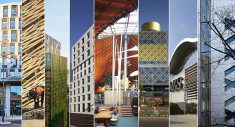This article was originally published on Huffington Post. Written by Roger Platt | President at USGBC
I recently observed that a “refreshing free-market breeze” is blowing in the direction of green buildings and green communities. I summarized part of that trend in four words, “Our Investors Require It.”
Now I’d like to offer another four-word business case.
Most private sector money used to construct green buildings comes from mortgage lenders, not equity investors. So this time I want to focus on exciting, new demand for green buildings coming from the lending community.
“Our Lender Values It”
Equity investors seek to enhance their properties’ long-term value. Simultaneously, their mortgage lenders are interested in reducing risk. A lender’s primary risk is the borrower’s inability to repay the mortgage or the potential to default on specific terms and conditions. Mortgage lenders evaluate debt-financing requests through this lens – to mitigate risk, lenders look for a property to generate steady, positive cash flow over the loan term.
Properties also need to withstand economic fluctuations, market competition and the natural “aging” or obsolescence of the property. With leading lenders around the globe, “certified green collateral” plays an important part when calculating mortgage risk.
Now, as never before, green buildings are recognized as high-quality collateral and, therefore, an important variable to reducing risk.
A new study from the University of Arizona makes this case with graphic clarity. Professors there mapped the “relationship between sustainability property features and corresponding commercial mortgage default risk.” Their findings reveal that commercial mortgage loans with collateral consisting of buildings certified as ENERGY STAR® have a lower likelihood of loan default when compared to non-ENERGY STAR buildings.
Where the collateral is LEED-certified, default risk is significantly lower than non-LEED-rated buildings.
This research echoes a working paper by Professor Nils Kok, with colleagues Piet Eichholtz, Rogier Holtermans and Erkan Yonder, that shows pricing advantages for both commercial mortgages and corporate bonds issued by U.S. REITs since 2000.
There is also the 2013 University of North Carolina research report that found lower default rates for residential energy efficient buildings with an ENEGY STAR rating.
And no less an authority than Fannie Mae recently announced that multifamily properties that are green building certified by third-party standards (including LEED and ENERGY STAR) will receive a 10-basis-point discount in mortgage rates. Even with mortgage rates at historically low levels, 10 basis points is real money. For example, a reduction of the interest rate from 5% to 4.9% on a $10 million multifamily loan would save almost $100,000 in interest payments over the life of the loan. Professor Kok points out that Fannie Mae’s interest rate represents the “first tangible pricing differentiation [he has] seen in the real estate market” for green building certified properties. Put succinctly: Fannie Mae Multifamily associates green-building-certified properties with lower risk, and values that reduced risk by charging borrowers a lower interest rate.
In this same great article, Kok notes: “On the corporate bond side, the green bond market has made significant strides, and for real estate in particular we have seen five REITs/property companies issuing green bonds including Vasakronan, Regency Centers, Vornado, Unibail-Rodamco issue Land II, and Stockland.” The proceeds from these general obligation bonds are being used to “green up” these portfolios through the construction and renovation of buildings to green standards – BREEAM, Green Star and LEED are all used by these green bond issuers. These kinds of developments were almost unimaginable just a few years ago.
U.S.-based lenders have a history of catalyzing environmentally responsible borrower behavior. After the terrible hazardous waste spills that gave rise to the superfund law, lenders required borrowers to undertake a Phase I Environmental Site Assessment as a condition of funding. The assessments made more transparent the degree of environmental risk associated with collateral.
Leading banks are now also assessing the positive environmental features of their properties—and of the borrower’s entire enterprise. With the use of Environmental, Social and Governance metrics like GRESB on the rise coupled with the Appraisal Foundation’s recent advisory on high performance building valuation, it seems reasonable to project that non-green building collateral or non-green real estate enterprises may be subject to different risk assessments by lenders based on their underlying asset and corporate-risk profiles.
It’s a good time to be in the green building industry. The four-word business case – “Our Lender Values It” – means that real estate investors and lenders need to ask a simple question: “Can I afford the risk of not having a green property?”




